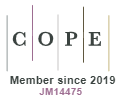Ja, ucieleśniona w ruchu, czyli o biegowej drodze z autoetnografią
DOI:
https://doi.org/10.18778/1733-8069.17.1.04Słowa kluczowe:
antropologia sportu, antropologia ciała, ucieleśnienie, autoetnografia, bieganieAbstrakt
Artykuł pokazuje, w jaki sposób autoetnografia może wzbogacić badania nad sportem. Na podstawie swoich doświadczeń jako byłej biegaczki wyczynowej autorka opisuje, w jaki sposób wykorzystała narzędzia takie jak: film autoetnograficzny, fotografia czy dziennik badawczy do kompleksowego antropologicznego opisu zmysłowego doświadczenia biegu. Badaczka obserwuje poszerzający się zakres wykorzystania autoetnografii w różnorodnych tematach badawczych ze szczególnym pochyleniem się nad antropologią ciała. Mierzy się z problemem językowej niewyrażalności doświadczenia ciała w sporcie i proponuje własne rozwiązania. Tekst został napisany na podstawie książki Ucieleśnione w ruchu. Polskie biegaczki wyczynowe w perspektywie antropologicznej oraz uzupełniony o nowe spostrzeżenia. Jak pisze autorka: „Autoetnografia ma dla mnie wartość również w tym sensie, że jest ciekawą konfrontacją rozmówców z badaczem, podczas której zachodzi wymiana doświadczeń i opinii. Jest to swego rodzaju praca nad relacją. W ten sposób obie strony się odsłaniają, obie coś ryzykują, a to może prowadzić do ciekawych wniosków” (Szyma 2019: 32).
Pobrania
Bibliografia
Anderson Leon (2014) Autoetnografia analityczna. „Przegląd Socjologii Jakościowej”, t. 10, nr 3, s. 144–166.
Google Scholar
Chang Heewon, Ngunjiri Faith Wambura, Hernandez Kathy-Ann C. (2013) Collaborative Autoethnography (Developing Qualitative Inquiry). London: Routledge.
Google Scholar
Domańska Ewa (2007) „Zwrot performatywny” we współczesnej humanistyce. „Teksty Drugie”, nr 5, s. 48–61.
Google Scholar
Ellis Carolyn, Bochner Arthur (2000) Autoethnography, personal narrative, reflexivity: Researcher as subject [w:] Norman K. Denzin, Yvonna S. Lincoln, eds., Handbook of Qualitative Research. Los Angeles: Sage Publications, s. 733–768.
Google Scholar
Garncarek Emilia (2010) Kobiece ciało jako przedmiot kontroli społecznej. „Przegląd Socjologiczny”, t. 59, nr 3, s. 55–69.
Google Scholar
Hastrup Kirsten (2008) Droga do antropologii. Między doświadczeniem a teorią. Kraków: Wydawnictwo Uniwersytetu Jagiellońskiego.
Google Scholar
Hockey John (2006) Sensing the run: The senses and distance running. „Senses & Society”, vol. 2, no. 1, s. 183–202.
Google Scholar
DOI: https://doi.org/10.2752/174589206778055565
Jakubowska Honorata (2012) Sport z perspektywy płci. Dyskusje o nierówności, tożsamości i odkrytym/ukrytym ciele [w:] Monika Kozioł, Delfina Piekarska, Maria Anna Potocka, red., Sport w sztuce. Kraków: Muzeum Sztuki Współczesnej w Krakowie, s. 80–95.
Google Scholar
Jakubowska Honorata (2015) Wiedza pozadyskursywna i sposoby jej badania na przykładzie przekazywania i nabywania sportowych umiejętności. „Studia Socjologiczne”, nr 3 (218), s. 173–191.
Google Scholar
Kacperczyk Anna (2014) Autoetnografia – technika, metoda, nowy paradygmat? O metodologicznym statusie autoetnografii. „Przegląd Socjologii Jakościowej”, t. 10, nr 3, s. 32–74.
Google Scholar
Kafar Marcin (2014) Wokół humanizacji nauki – znaki, tropy, konteksty. „Przegląd Socjologii Jakościowej”, t. 10, nr 3, s. 16–31.
Google Scholar
Lefebvre Henri (1991) The Production of Space. Oxford: Blackwell.
Google Scholar
Malinowski Bronisław (2008) Dziennik w ścisłym znaczeniu tego wyrazu. Kraków: Wydawnictwo Literackie.
Google Scholar
McMahon Jenny (2011) Body work – Regulation of a swimmer body: an authoethnography from an Australian elite swimmer. „Sport Education and Society”, vol. 16, no. 1, s. 35–50.
Google Scholar
DOI: https://doi.org/10.1080/13573322.2011.531960
Pacukiewicz Marek (2016) Refleksy w obiektywie. Mitologika filmu etnograficznego [w:] Jakub Dziewit, Małgorzata Kołodziej, Adam Pisarek, red., Patrzenie i widzenie w kontekstach kulturoznawczych. Katowice: Wydawnictwo Grupa Kulturalna.pl, s. 29–43.
Google Scholar
Samudra Jaida Kim (2008) Memory in our body: Thick participation and the translation of kinesthetic experience. „American Ethnologist”, vol. 35, no. 4, s. 665–681.
Google Scholar
DOI: https://doi.org/10.1111/j.1548-1425.2008.00104.x
Sikora Sławomir (2012) Filmy i paradoksy wizualności. Praktykowanie antropologii. Warszawa: DiG, Instytut Etnologii i Antropologii Kulturowej Uniwersytetu Warszawskiego.
Google Scholar
Szyma Karolina (2018) _63. Dostępny w Internecie: https://www.instagram.com/p/BoeeHOPllnd/
Google Scholar
Szyma Karolina (2019) Ucieleśnione w ruchu. Polskie biegaczki wyczynowe w perspektywie antropologicznej. Warszawa: Wydawnictwa Uniwersytetu Warszawskiego.
Google Scholar
DOI: https://doi.org/10.31338/uw.9788323538042
Taussig Michael (1992) The Nervous System. London: Routledge.
Google Scholar
Wala Katarzyna (2012) [Nie] potrafię gotować! Dostępny w Internecie: https://stosowana.wordpress.com/2012/05/09/nie-potrafie-gotowac [dostęp 16 sierpnia 2017 r.].
Google Scholar
Pobrania
Opublikowane
Jak cytować
Numer
Dział
Licencja

Utwór dostępny jest na licencji Creative Commons Uznanie autorstwa – Użycie niekomercyjne – Bez utworów zależnych 4.0 Międzynarodowe.














